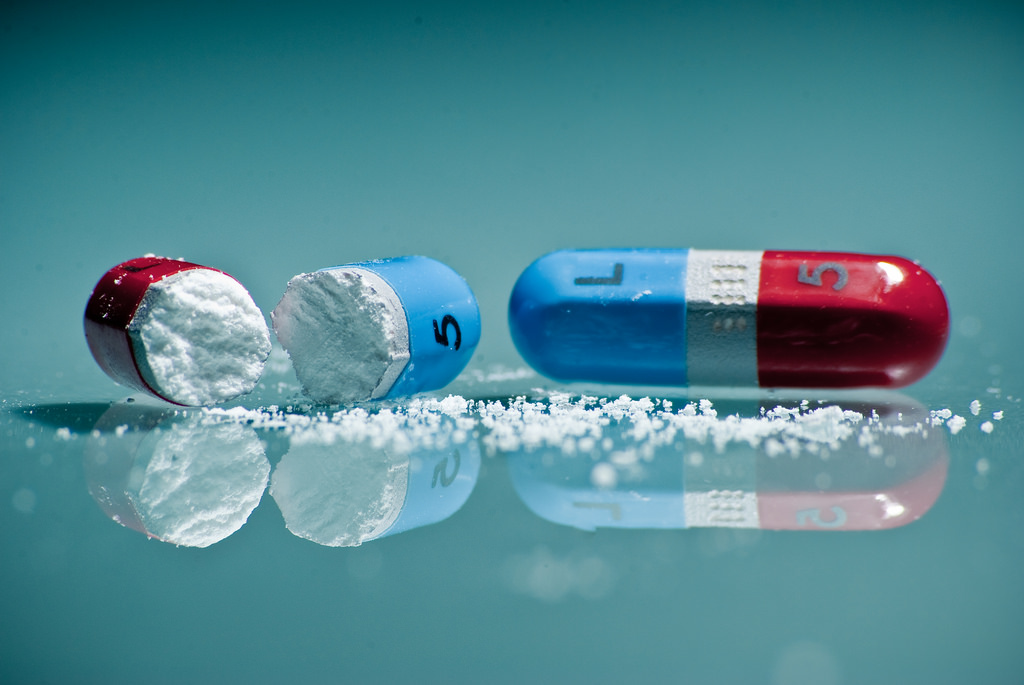Published on October 17th 2014, by KPCC Proposition 46 is an initiative statute placed on the ballot by voter petition. It is also referred to as the Troyand Alana Pack Patient Safety Act of 2014.
Proposition 46 is an initiative statute placed on the ballot by voter petition. It is also referred to as the Troyand Alana Pack Patient Safety Act of 2014.
Who’s behind this ballot measure?
For proponent Robert Pack, Prop 46 represents the latest chapter in a story that began shortly after his two children were struck by a car and killed in October. A jury found the driver was drunk and high on prescription drugs and sentenced her to 30 years to life in prison. But for Pack a key problem that remained unresolved was doctor shopping — when a patient goes from clinic to clinic selling each physician on a different pain in order to collect prescription medications. Pack, a tech professional, responded by becoming a political activist, helping to push two California bills through the legislature with the help of state Sen. Tom Torlakson. One increased the penalties for drunk driving. Another created a statewide database to help monitor prescriptions, though there is currently no requirement that doctors check it before dispensing drugs.
What would it do?
If approved, Prop 46 would:
- Require doctors to check a statewide prescription database before prescribing certain drugs (such as OxyContin, Vicodin, Adderall) to new patients
- Increase the cap on non-economic damages (i.e. pain and suffering) in medical malpractice lawsuits from $250,000 to $1.1 million and adjust for inflation moving forward
- Require random drug testing of doctors, with positive tests reported to the California Medical Board
- Require physicians to report when they suspect another physician was impaired by alcohol or drugs on the job or “during an adverse event failed to follow the appropriate standard of care” for a patient
- Require the board to suspend or otherwise discipline a physician found to have been impaired on the job
How is this different from existing laws?
According to the Legislative Analyst’s Office, currently:
- Individual physicians are in most cases not required to report on the sort of misconduct described in Prop 46. Hospitals are not required to administer drug and alcohol testing on doctors.
- The California Department of Justice already maintains a database for prescription drug monitoring, known as the Controlled Substance Utilization Review and Evaluation System, or CURES. About 12 percent of eligible providers have already registered to use it, and beginning in 2016, all providers will be required to sign up. However, they will not then, and are not now, required to check the database before prescribing drugs to a new patient.
- The Medical Injury Compensation Reform Act of 1975, or MICRA, limited malpractice liability in response to concerns that high malpractice costs would reduce the number of doctors practicing in the state. It created a $250,000 cap for noneconomic damages (pain and suffering), though it did not limit the amount for economic damages, such as medical bills and loss of income. It also placed a cap on attorney fees, which Prop 46 would retain.
- Medical Board also has responsibility for disciplining physicians who illegally prescribe or abuse drugs
How much will it cost taxpayers?
There is “substantial uncertainty” about many of the potential financial impacts to state and local governments, but the LAO estimates: RAISING THE CAP ON NONECONOMIC DAMAGES TO $1.1 MILLION COULD LEAD TO …
- An increase in the amount of non-economic damages
- Increase in total health care spending of 0.1 percent to 0.5 percent due to increase in malpractice costs
- Increase in total health care spending of 0.1 percent to 1 percent due to changes in provider behaviors (i.e. ordering more lab tests as a precaution)
- Public expenses in the tens of millions of dollars to several hundred million dollars annually due to higher health care costs being passed on to purchasers, which include state and local governments
- Unclear whether the higher cap will increase or decrease the number of claims
REQUIRING PHYSICIANS TO CHECK THE CURES DATABASE AND UNDERGO DRUG AND ALCOHOL TESTING COULD LEAD TO … An uncertain but potentially significant amount of savings overall. This is due in part to:
- Lower prescription drug costs due to a potential decrease in prescriptions being dispensed as “doctor shoppers” are identified
- Lower governmental costs associated with prescription drug abuse — such as law enforcement, social services and health care — as fewer prescriptions are filled
- Savings from fewer medical errors (i.e. doctors deterred from using drugs on the job)
Who’s supporting it and why?
By far the biggest financial backer of Prop 46 is the group Consumer Attorneys of California, a professional organization for consumer and personal injury lawyers. CAOC has given nearly $1.2 million to the campaign as of September 24. The advocacy outfit Consumer Watchdog has also played a key role in organizing the campaign and was the second largest financial backer with $290,000 in contributions. Supporters of Prop 46 say it will protect patient safety by:
- Deterring negligent doctors by holding them accountable with higher monetary damages
- Cracking down on prescription drug abuse
- Disciplining doctors who practice medicine while under the influence
- Attorneys could also potentially benefit from a higher cap on noneconomic damages by charging more in fees. However, according to the LAO, attorneys are limited in the share of an award they can demand as payment. They cannot receive as a fee, for instance, more than 40 percent of the first $50,000 recovered or more than 15 percent of the amount recovered greater than $600,000. Prop 46 would retain that limit.
Who’s opposing it and why?
Doctors, hospitals and insurance companies have mounted an expensive campaign against Prop 46. The Cooperative of American Physicians, The Doctors Company and NORCAL Mutual Insurance Company — all medical malpractice insurers — have contributed about $10 million each to oppose the measure. Kaiser Permanente, the California Medical Association, the California Hospital Association, the California Dental Association and others have also contributed millions to the No on 46 campaign. Opponents argue that Prop 46 will:
- Prompt insurance companies, doctors and government agencies to pass increased costs on to taxpayers and the consumer
- Prompt health care professionals to leave California in favor of practicing somewhere with lower malpractice insurance rates
- Put consumer privacy at risk, since government websites and databases are vulnerable to hacking
… a YES vote means… You accept the changes proposed: the cap on noneconomic damages for medical malpractice, including pain and suffering, will be increased to $1.1 million and adjusted annually for inflation; health care providers will be required to check a prescription database before dispensing certain drugs to new patients; and doctors will be subject to random drug and alcohol testing. … a NO vote means… You reject the changes will be made: the current $250,000 cap on noneconomic damages will remain; health care providers will not be required to check the prescription database; and doctors will not be subject to random drug and alcohol testing.




